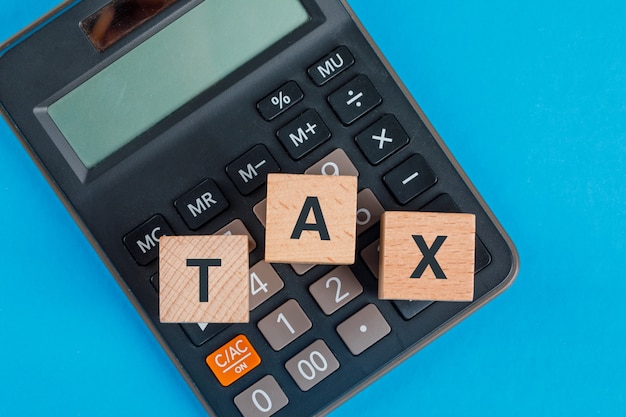However, most startups don’t have a substantial investment to set up a manufacturing unit. Many startups have a few products that they partner with manufacturers to produce on a small scale. While the industry has room to grow, many startups use dropshipping in conjunction with their own products to reap profits. Many others only use a dropshipping model to add a range of products to their product portfolio and benefit from the volume of sales.

This guide will tell you all you need to know about dropshipping in eCommerce and how you can use it to grow your business to greater heights.
What is Dropshipping?
Dropshipping is an eCommerce business model. It allows businesses to outsource manufacturing, procurement, inventory management, fulfillment, and shipping to a supplier. The business typically only looks after marketing and customer service.
This model allows businesses to run without the significant overhead cost associated with manufacturing, inventory management, fulfillment, and shipping. It also allows them to feature a range of products on their website or other channels without spending a single penny on manufacturing and order fulfillment.
To put it simply…
So, dropshipping businesses are, in simple terms, middlemen that bridge the gap between suppliers and customers.

Dropshipping is a very popular business model in the eCommerce industry. It is because of its popularity that the Chinese retail giant Alibaba holds the largest share in the eCommerce industry. This share amounts to a staggering 23% of the multi-trillion-dollar market. Alibaba mostly has wholesalers from whom dropshipping businesses source products to sell to audiences worldwide, which justifies its huge market share.
Dropshipping Process
In a retail business, the seller stocks products in a warehouse, manages the sales, and, in most cases, handles the shipping of the product. In a dropshipping business, you don’t have any physical inventory. The business displays the product on its website.
When a customer places an order by paying, the business keeps its share and pays the supplier with this money. This process could be manual or automatic. The supplier then handles the fulfillment process and ships the product to the customer.

In this process, the business profits by pricing the product more than what the supplier asks for. Because the supplier manages the inventory, the business does not have to stock the product or even ship it out to the customer.
Steps to Start a Profitable Dropshipping Business
Till now, dropshipping might sound like an easy job. Without the responsibility of procurement, inventory management, and fulfillment, what’s left for the business to do?
But even though dropshipping might sound easy, in this competitive eCommerce industry, running a profitable dropshipping business is not easy. Every step in setting up your dropshipping business should be taken with absolute care. In this industry, many businesses are earning millions of dollars while others are stuck at a few thousand. Some might not even make enough money to cover their advertisement and web hosting costs and have to eventually shut down.

But if you’re someone who wants to set up a profitable dropshipping business, here are the steps to follow:
1. Choose a Niche
The first step to take when you decide to start your dropshipping business is choosing a niche. There are millions of products to dropship out there, but unless you narrow down your focus, your marketing bucks won’t bear fruit.

The concept is to find a specific target audience and niche to target and build your reputation with this audience. For example, your niche could be Harry Potter merchandise. With a vast audience out there who wants to purchase good quality merchandise, you will have a lot of opportunities to earn despite the competition.
Choose a niche that has:
- A huge demographic
- Room to expand your product line
- Your interest
You can even change this decision when you’re finding products and connecting with suppliers.
2. Find the Products
Even if you have a great business concept, you might not be able to find the right products for your target audience on dropshipping platforms. The best way to go forth is to shortlist 4 to 5 business concepts and then find relevant products at the best wholesale price.
While AliExpress is one of the most common platforms for finding dropshipping products and suppliers, you can even try out other platforms for your search that might even have the option for you to customize the product.
Choose products that have:
- A good profit margin for you
- Has good image quality
- Has a sizable audience willing to purchase
3. Find a Dropshipping Supplier
Your supplier’s reliability is the most important factor for the success of your business. Your customers are ordering from you and not the supplier directly. Therefore, verifying that the supplier is delivering the right product within due time is your responsibility.

If you take money from the customer but the supplier doesn’t deliver as promised, your business will suffer a loss. Here are some factors you should consider when you’re choosing one or multiple suppliers for your dropshipping business:
Product Quality
Choose suppliers who deliver the kind of quality you want for your business. If you want to position your business as high quality, only choose suppliers that deliver high-quality products. A good way to determine this is to check supplier reviews and photos. However, the best way is to order a few products from the supplier to verify the quality for yourself.
Profit Margins
Even though you are not incurring a lot of costs, the point of doing business is profitability. You can spread your margins thin in a competitive market to profit from sales volume, or you can look for a 15% to 20% margin on products to get a reasonable profit from the sales.
![]()
Depending on your country of residence and state, you will have to pay a reseller tax on every sale. Take the percentage of sales tax you have to pay on each sale before calculating your profit margins.
Reliability
Choose suppliers who deliver within the promised time and do not charge exceptionally high shipping charges. You must also make sure that your supplier has the product in stock so your customers do not have to wait for the supplier to restock the product. Initially, you might choose suppliers who have a few thousand units in stock. Remember that you won’t be the only business customer for the supplier.

As your business grows, you will have to look for suppliers who can meet the demand that your website generates for their products.
Return Policy
In some cases, it might be possible for you to grab a supplier with a return policy. However, many suppliers don’t have a return policy. In this case, you might develop your own return policy or directly contact a supplier to agree to return terms.
Most suppliers on online marketplaces like AliExpress have a good inventory of products and are reliable. Even then, make sure to check out their reviews before coming to a final decision.
4. Build your Online Store
With your suppliers set and product portfolio decided, the next step is creating a dropshipping website. The website will not show that it is based on a dropshipping model. It is simply a shop where you virtually stock the products for your customers to order from.

While we can’t cover how you can create an online store from scratch, for your help, we have listed the things you will need:
- Web hosting
- A domain name
- eCommerce integrations
- Multiple payment gateways
5. Integrate the Dropshipping Platform
Many businesses carry out order processing manually. This means that when they receive an order on their website, they manually place the order with the supplier. This process is time-consuming but best for a new dropshipping business. However, when the orders start to pour in, this workflow isn’t reliable. It could result in human errors and delays in order processing.

So, when you’re building a website, make sure your web hosting service has an eCommerce integration feature for your dropshipping platform. This way, you automate your online store and only have to focus on the expansion of your product portfolio and marketing your website to existing and new customers.
6. Register Your Business
Depending on where you are located, you will have to register your business. This allows you to link your payment to your bank account and pay for the company’s expenses, including web hosting and advertising from the company’s account.
Here is the list of the legalities you need to fulfill for your business:
- Get an NTN or TIN – Tax identification number.
- Use TIN to open a company bank account and link it to the payment gateways on your website like PayPal, Stripe, etc.
- Get a sales tax ID.
- If required by your country and state, get a reseller’s permit from the state tax office.

Pros and Cons of Dropshipping
Like any other business model, dropshipping also has some pros and cons. Here are the pros and cons of dropshipping to consider before choosing dropshipping as your business model:
Benefits of dropshipping
● Minimal investment
The first and probably one of the most notable features of a dropshipping model is that it doesn’t require any significant investment. Entrepreneurs can start a dropshipping business even without owning an office facility. The supplier bears all the costs of maintaining a storage facility.

Because there is no investment in inventory, the risk is also minimal. This is also a key benefit for entrepreneurs stepping into the business world for the first time. They can see what works in business and even change their niche in search of the best, most profitable products.
● Multi-channel presence
A business running on a dropshipping model can invest resources to establish a multi-channel presence. They don’t only have to build their own website; they can establish their presence over eCommerce channels like Amazon and social media platforms like Facebook and Instagram.
Plus, depending on the supplier, the business can open its doors to customers from multiple locations from anywhere in the world.
● Easy scalability
One of the best parts about a dropshipping model is its scalability. Because the business does not have to invest in inventory, it can list a vast number of products on its website, enlist products over multiple platforms, and connect with several suppliers. Plus, there’s no limit to how many orders the business can take since order fulfillment depends on the supplier.

With the ability to scale, the business can cater to the target audience with a huge range of products. For instance, they can develop a whole website dedicated to home improvement products.
Limitations of Dropshipping
● Intense competition
Dropshipping has lowered the barriers to entry in the eCommerce industry. It has also allowed manufacturers and suppliers to focus on their strengths rather than spending money on marketing and customer acquisition. While this is good news for businesses with strengths in marketing and not a lot of investment capabilities, it means that the competition in the industry is fierce.

Businesses are competing on price margins for similar products, which means they have no choice but to play on high sales volumes to gain profitability.
● Dependency on the suppliers
One of the limitations of the dropshipping model is the dependency on the supplier. The product quality and pricing all depend on the supplier. Plus, the product might not be unique from other suppliers. The dropshipping business will not be able to brand the product as its own and implement quality assurance.

So, the business does not have any control over the packaging and shipment. At times, when the supplier makes mistakes when fulfilling orders, like using low-quality packing or missing items, the business’s reputation is damaged. But even though the supplier is responsible for most processes, anything wrong with the fulfillment and product quality means the business is responsible for satisfying the customer by either refunding them or initiating a return process.
● Inventory management
Because the business is reliant on the seller, it does not have up-to-the-minute updates on the inventory. Therefore, they cannot determine which product runs out of stock by the time the supplier receives the order. This can damage the business’s brand image and impact customer trust.
Strategies for a Profitable Dropshipping Business
Starting a dropshipping business is easy, but keeping it running can be pretty tricky. Managing suppliers and keeping customers satisfied is all that businesses need to do. So, to keep a dropshipping business running profitably, here are some strategies to consider:
● Conduct competitor research
When you’re looking for a niche and products, one thing that can help you onboard profitable products is competitor research. There are many categories where competitors are already doing well. Delving into this category with the same products would not get you a lot of customers.
If the niche already has a lot of players, you might consider changing your niche to something that has a user base, is profitable, and does not have a lot of competitors.
● Create a brand
Even though you’re sourcing the product from a supplier, you can always create a brand. Your storefront should be attractive. The product descriptions should be enriched with detailed and accurate descriptions of the product. If you’re considering branding the product, you could connect to the seller personally and pay them a price to package the product a certain way or add your logo to the product or packaging.

When you create a brand in dropshipping that customers can trust, you can even charge premium prices, and the competition in the industry won’t affect your sales and profit margins.
● Use multiple marketing channels.
When you’re running a business on a dropshipping model, marketing and gathering customers are your responsibilities. When you use multiple marketing channels, you increase your brand’s visibility, which results in more sales. The more channels you’re listed on, the more customers you will get.
However, uploading products over multiple channels means catering to multiple product specification sheet requirements. You will need employees who can change your product spec sheets according to the platform or automate the process using a PIM system like Pimberly.
Also, since marketing will be your domain, optimize the product descriptions to be discovered by your audience on different platforms and search engines.
How much investment does a dropshipping business require?
Compared to other eCommerce models, dropshipping does not require a hefty investment. However, there are some factors that you will need to invest in at the beginning to set up your business and get the dropshipping model running:
- Website domain: You will have to choose a domain name for your website. If you’re purchasing web hosting, many platforms offer the domain name free for a year. Depending on the plan you choose, this cost can be around $5-%25 for a year.
- Website hosting: Website hosting plans vary from $5 – $70 per month. The price you pay for hosting depends on the package and features you’re purchasing. Make this choice mindfully, as your web hosting impacts your website’s loading speed and look.
- Advertising costs: Based on the advertising you’re doing, you could be spending anywhere from $10 – $100 per week. The advertising costs also vary based on the geographic location you’re targeting, the competition, and the platform you’re advertising on.
- Sample orders: Sample orders will help you to determine the quality of the shipment. The order cost will vary depending on the product you’ve chosen for your dropshipping business.
- Tools: Specialized tools such as SEO tools and paid website templates and features could give you a competitive advantage but cost you a few dollars each month.
A dropshipping business has limitless potential. However, with clever strategies, you can increase your chances of success and grow your business even in a competitive niche. If you’re unfamiliar with advertising, you could hire employees who know how to advertise. Website development is also one major cost and time investment in a dropshipping business. You could set up the website yourself or hire employees to help you design a professional-looking website that attracts customers.
How can Pimberly help with your dropshipping business?
Every dropshipping business has potential – even those that are operating in a highly competitive niche. However, reaping this potential requires professionalism. When you’re operating a dropshipping business, you need to play on volumes. The more products you have in your portfolio, the more channels you’re available on, and the more geographic locations you cater to, the more your profitability will improve.
But even though a business using a dropshipping model is only tasked with marketing, handling a bulk load of products and multiple channels takes a lot of work.
Pimberly’s AI-powered PIM system is helping hundreds of dropshipping businesses reach their potential. By harnessing the power of AI, these businesses are outperforming even the strongest of competitors in the industry. Here’s how they’re doing it:
Creating SEO-optimized product descriptions
Using the power of AI, these businesses are creating hundreds of SEO-optimized product descriptions for several products in their portfolio every day. This patented AI gathers data from other platforms to create descriptions that perfectly describe the product.
Centralized data management
Managing a portfolio of hundreds and thousands of products becomes easy when all the product information is stored in a single hub. The employees can access this hub based on their job and use the information without a doubt about its truth.
Multi-channel uploading
Every channel has its own format for product specifications. For instance, Amazon requires a short product description displayed at the start and a detailed description afterward. Similarly, other platforms require other formats. If you’re catering to audiences in different locations, you need to change your product’s details according to the units used there.
Pimberly’s advanced AI system can help change product dimensions from cm to inches. It can also change the pricing of each product based on the currency, allowing the business to cater to a massive audience without having to invest in manual workflows.
Bottom line
Dropshipping is a simple concept, but executing this concept in reality is quite challenging. Even if the responsibility for manufacturing, procurement, inventory management, and order fulfillment lies on the supplier, it is the business reputation at stake when the customers order from them.
This guide includes all you need to know about dropshipping – including the good and the bad. But even though dropshipping is challenging, with a system like Pimberly PIM, you can automate your business to a great degree.
If you want to see how Pimberly can help you harness the power of AI and technology, contact our representatives now. You can get a free demo for your business, which will help you get one step closer to your dream of becoming a dropshipping business.












